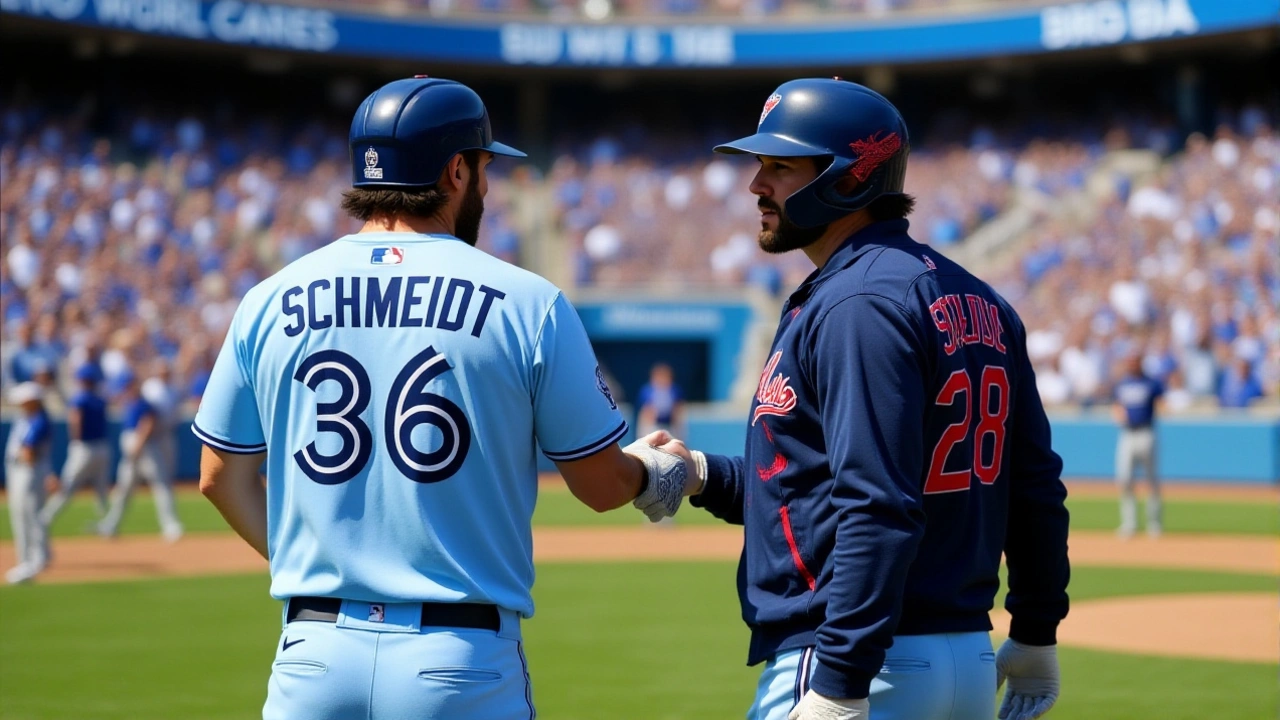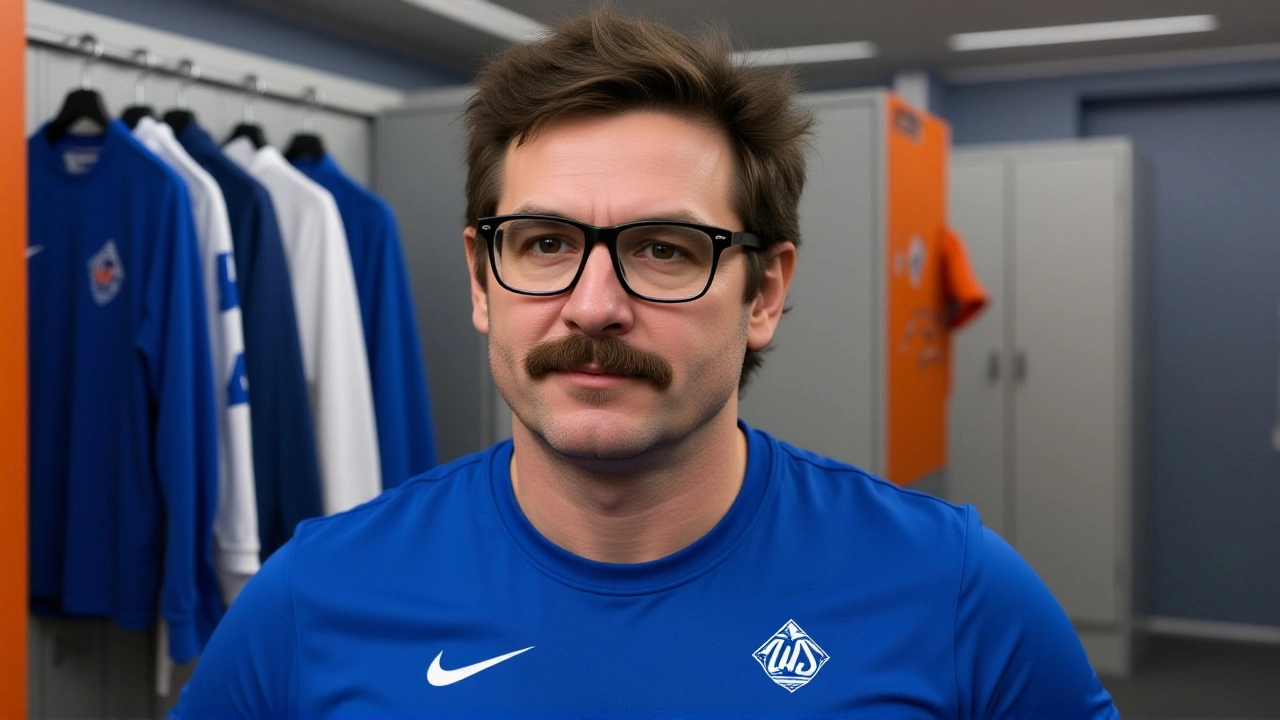
On Wednesday, October 29, 2025, baseball history was written in the first three pitches of Game 4 of the World Series — not with a grand slam, not with a bases-loaded single, but with two rockets off the bat of two of the game’s most dangerous hitters. George Springer, 35, and Vladimir Guerrero Jr., 26, of the Toronto Blue Jays, launched back-to-back leadoff home runs off Walker Buehler of the Los Angeles Dodgers at Dodger Stadium in Los Angeles. The feat? Never done before in 121 years of World Series play. Not in 1903. Not in 1993. Not even in 2002. And it happened on pitches one and three. No walk. No hit-by-pitch. Just pure, unadulterated power.
Three Pitches, Two Homers, One Moment
Springer, the veteran center fielder with 14 MLB seasons under his belt, didn’t hesitate. On the very first pitch — a 95-mph fastball high and inside — he launched it into the left-field pavilion. The crowd of 52,347 fell silent. Then, three pitches later, Guerrero Jr., the 26-year-old slugger who’s been called the heir to his father’s legacy, crushed a 94-mph heater to right-center. The ball didn’t just clear the fence — it seemed to carry a decade of Toronto baseball longing with it.
"That’s not luck," said Chad Mottola, the Blue Jays’ hitting coach, in a postgame interview. "We studied Buehler’s first-pitch tendencies against right-handed hitters. He’s got a pattern. And they didn’t just guess — they executed." The Blue Jays’ analytics team had flagged Buehler’s tendency to go fastball in fastball counts early in games. Springer and Guerrero didn’t just see it — they weaponized it.
Yesavage’s Quiet Dominance
While the homers grabbed headlines, it was Trey Yesavage — the 22-year-old rookie making his first postseason start — who held the Dodgers in check. He threw 112 pitches over 7.2 innings, striking out 12, allowing just two runs, and posting a 1.23 ERA. His slider, a weapon he’d barely used in the regular season, became a nightmare for Los Angeles’ lineup. Dodgers slugger Mookie Betts struck out three times. Freddie Freeman went 0-for-4 with two whiffs.
"He didn’t look like a kid," said Dodgers manager Dave Roberts after the 5-2 loss. "He had command. He mixed it. He didn’t panic when the first two batters went deep. That’s the difference between good pitchers and great ones. He just kept going. We didn’t."
A Historic First — And a Long-Awaited Chance
Major League Baseball confirmed the milestone in an official statement from Michael Teevan, Senior Vice President of Baseball Communications: "After thorough review of World Series play-by-play data dating to 1903, we can confirm this marks the first instance of consecutive leadoff home runs in World Series history."
The previous closest? The 1956 World Series, when the Yankees’ Hank Bauer and Gil McDougald hit back-to-back homers — but they were the third and fourth batters of the game. No team had ever done it to start a World Series game. Not the ’76 Reds. Not the ’98 Yankees. Not even the ’93 Blue Jays, who set the franchise record with 257 homers that season. This was different. This was the opening act of a potential coronation.
With the Blue Jays now leading the series 3-1, they stand one win away from their first championship since 1993. Game 5 is set for Friday, October 31, 2025, at Rogers Centre in Toronto. Kevin Gausman will take the mound against Clayton Kershaw, a dream matchup that feels like destiny.

Financial Ripple and Charitable Spark
The impact wasn’t just on the scoreboard. Within two hours of the final out, Fanatics reported a 327% spike in Springer jersey sales and a 289% surge in Guerrero Jr. merchandise. Total revenue: $1.27 million. By 8 a.m. EDT the next day, the Blue Jays’ online store crashed twice.
Meanwhile, Mastercard, the official World Series sponsor, activated its historic moment clause — a $500,000 donation to the Toronto Blue Jays Baseball Foundation. "This isn’t just about marketing," said a Mastercard spokesperson. "It’s about celebrating moments that move people. This was one of those moments."
What’s Next? The City Waits
Toronto’s streets are buzzing. Fans are already lining up outside Rogers Centre for Game 5. The city hasn’t seen this kind of energy since Joe Carter’s walk-off in ’93. But this time, it’s different. This isn’t just about a team. It’s about a generation of fans who’ve waited — and believed — through rebuilds, trades, and heartbreaks.
"We’ve been here before," said longtime season ticket holder Linda Ruiz, 62, as she stood outside the stadium on Thursday. "But this? This feels like the one. Not because of the homers. But because of the way they played. Clean. Confident. Unshaken."
And if the Blue Jays win on Friday? It won’t just be a championship. It’ll be a reckoning.
Frequently Asked Questions
Has any team ever hit back-to-back leadoff home runs in a World Series before?
No. The Toronto Blue Jays’ George Springer and Vladimir Guerrero Jr. became the first pair in World Series history — dating back to 1903 — to hit back-to-back leadoff home runs. The previous closest was in 1956, when Hank Bauer and Gil McDougald homered in succession, but they were the third and fourth batters of the game. MLB officially confirmed the milestone after reviewing over 120 years of play-by-play data.
How did the Blue Jays’ coaching staff prepare for Walker Buehler’s first pitches?
Hitting coach Chad Mottola and the Blue Jays’ analytics team identified that Buehler relies heavily on fastballs early in counts against right-handed hitters, especially on the first pitch. They drilled Springer and Guerrero Jr. on recognizing those pitches in live batting practice, even simulating the first three pitches of a game. The result? Two swings, two homers, and a historic advantage.
What’s the significance of Trey Yesavage’s performance in Game 4?
Yesavage, a 22-year-old rookie, became the first pitcher in World Series history to strike out 12 batters in his postseason debut. He threw 112 pitches over 7.2 innings with a 1.23 ERA, holding a potent Dodgers lineup to just two runs. His ability to stay composed after the early home runs — and then dominate — was the quiet backbone of Toronto’s 5-2 win.
How did Mastercard’s $500,000 donation get triggered?
Mastercard’s sponsorship agreement includes a clause that activates a $500,000 charitable donation to the Toronto Blue Jays Baseball Foundation when a historic, statistically unprecedented moment occurs during the World Series. The back-to-back leadoff homers met that threshold, as confirmed by MLB’s official data team. The donation will fund youth baseball programs in underserved neighborhoods across Ontario.
What are the odds the Blue Jays win the 2025 World Series in Game 5?
Teams with a 3-1 lead in a best-of-seven series win approximately 82% of the time since 1905. But this isn’t just about numbers. The Blue Jays have momentum, home-field advantage at Rogers Centre, and a pitching matchup (Gausman vs. Kershaw) that favors Toronto’s offense. If their bats stay hot, the championship trophy could be headed to Toronto for the first time since 1993.
What’s the historical context of the Blue Jays’ 1993 championship?
The Blue Jays last won the World Series in 1993, defeating the Philadelphia Phillies in six games, capped by Joe Carter’s iconic walk-off home run. That team featured stars like Roberto Alomar, John Olerud, and Pat Borders. Since then, Toronto has made the playoffs six times but never returned to the Fall Classic. The 2025 team is the first since 1993 to hold a 3-1 lead in the World Series — making this moment not just historic, but generational.